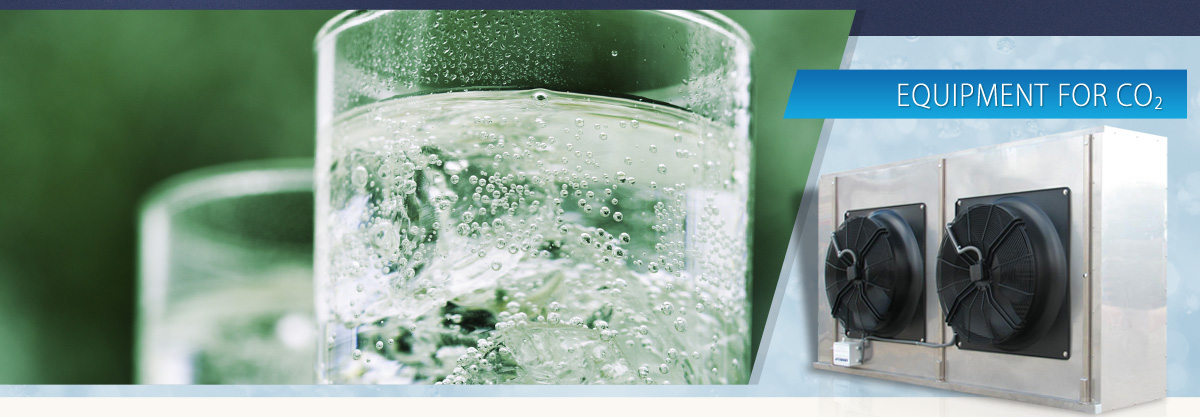
CO2 evaporators
CO2 evaporators are used to change the physical state of carbon dioxide from a liquid to a solid without significantly changing its pressure. They are made of highly efficient, lamellar, copper-aluminium heat exchangers. The housings of our evaporators are made of acid-resistant steel, which ensures an aesthetic look and resistance even after many years of use.
The heat necessary for evaporation of liquid carbon dioxide is supplied by air flowing through the lamellar block – this solution helps to reduce the energy use by ca. 90-95% when compared to traditional, electric evaporators.
In case of inadequate ambient temperature (min. +5oC), the evaporator can be equipped with an integrated water or vapour heater.
On demand, our evaporators can be supplied with a PZH certificate approving the evaporator for use with carbon dioxide installations in contact with food.
All evaporators supplied by us are fully equipped, ready to be connected with and integrated into a CO2 installation.
The standard equipment set includes:
- A heat exchanger in an acid-resistant, steel housing,
- Ventilating fans installed and electrically connected
- A power supply-control electric cabinet
- An electronic regulator controlling the device
- Two safety valves
- A filter to be installed in the installation, before the evaporator
- Flanges or screwings for joining the evaporator with the installation
The electronic regulator used with our equipment is important in terms of automation of evaporator’s operation. The regulation takes place on the basis of temperature measurements taken at different points of the evaporator, optionally also the pressure is measured. The controller governs, i.e. work cycles of particular exchanger sections, automatically switches on or off the flow of carbon dioxide, protects the installation behind the evaporator from damage resulting from the evaporator being overfilled with carbon dioxide (e.g. as a result of a sudden increase in carbon dioxide demand). The regulator is also responsible for switching on and off an optionally built-in heater in a case of ambient temperature drop below a value enabling the fluid to be evaporated inside the exchanger. The regulator can also have the function of securing the CO2 tank and installation at the evaporator inlet from an unwanted carbon dioxide (dry ice) solidification.
The evaporator can be switched on and off locally – using a switch located in the electric cabinet - as well as remotely, using an external transmitter, operated manually or using a computer.
Our evaporators undergo a continuous development, which is the reason why all technical data and information presented on our website and in the catalogues are always a subject to change.








 Home
Home